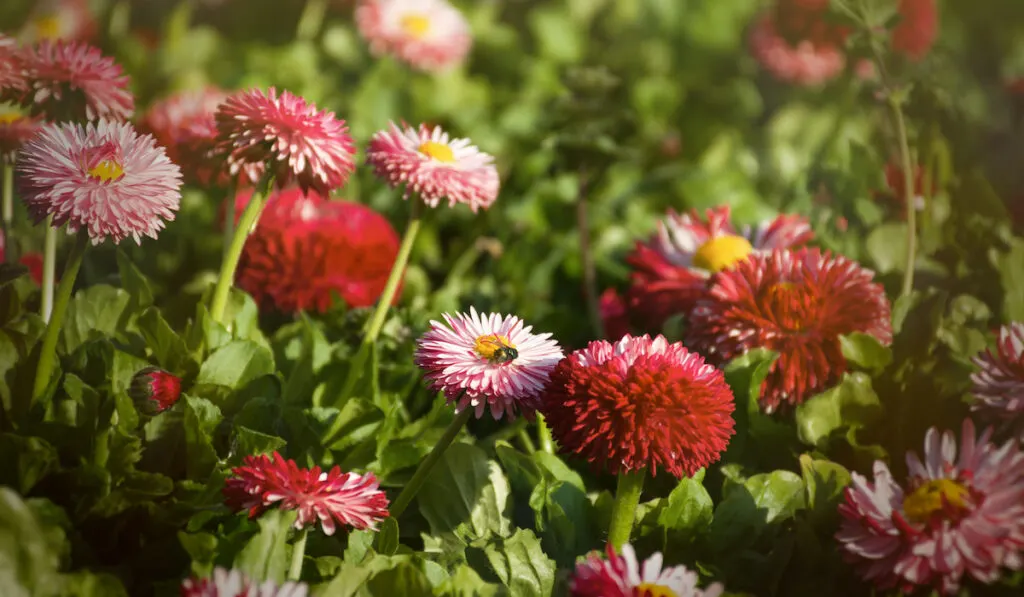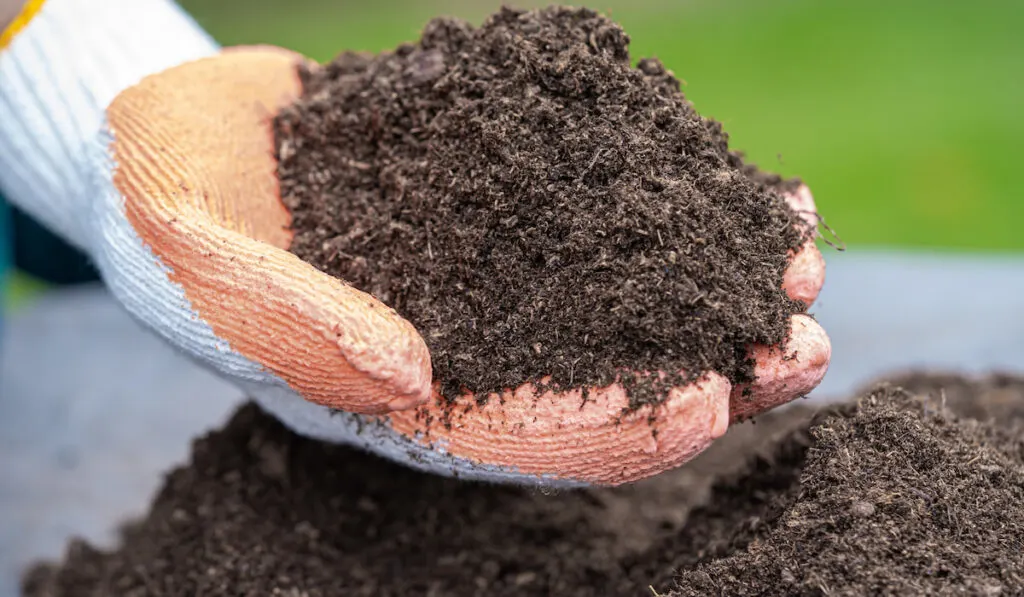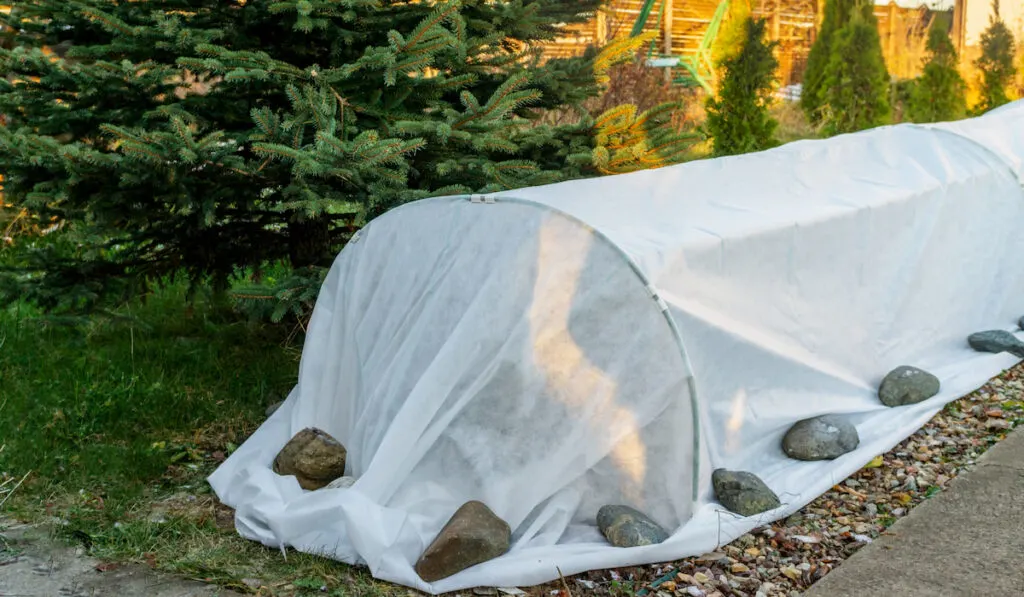Raised bed gardening is becoming extremely popular. It allows you to control several things, especially soil content. While many people grow annuals or vegetables in their raised bed gardens, are they also suitable for perennials? In order to answer this question thoroughly, you need to know what perennial plants and raised beds are.
A perennial plant is a plant that lives more than two years, unlike annuals and biennials which are short lived plants. The word perennial is often used to differentiate them from annuals and biennials that are short-lived.
The word perennial is also used to differentiate plants with little or no woody growth from trees and shrubs, which are also technically perennials in some ways.

A raised bed is a standing garden bed that is constructed above ground level, useful for easier planting without stepping on the working area. It can have a base against the ground with sides that extend upwards or, it can be raised up completely on legs with no direct ground contact.
So can perennials be grown in a raised garden bed?
Perennials can be grown in raised bed gardens with no limitations. Most varieties adapt easily and will thrive so long as care is taken to protect the plant during times of frost.
In this article, I will give you a glimpse of why you should ditch perennial ground gardening for raised bed gardening.
Table of Contents
Factors Important to Growing Perennials in Raised Beds
However, to achieve this, there are a number of factors considered in raising perennials in raised beds. These include but not limited to:
Soil moisture
Keep a close eye on the moisture of the soil since raised beds tend to lose moisture faster as compared to ground beds.
Watering
During the season (before fall), ensure that you water the plants thoroughly and frequently before the ground freezes.
Mulching

In order to conserve and retain moisture, add mulch to the soil. This will also help in temperature moderation in extremes.
Give young and exposed, or less-hardy perennials, some extra care during winter. Surround the raised bed with bales of straw, bags of leaves, or wood chips for extra insulation.

Pros and Cons of Planting Perennials in Raised Beds
8 Advantages of Planting Perennials in Raised Beds
- The garden looks absolutely neat. The walls keep soil in place without spilling all over and pathways can be easily cleaned.
- They require less struggle in terms of bending, more so for tall gardeners. This also applies to people with disabilities. They are more comfortable to use.
- They are very ideal in areas that have no soil, contaminated soil or the available soil is poor in terms of structure and nutrients availability.
- They easily gain warmth in spring thus enabling earlier planting.
- Different beds can hold a different array of soil thus allows you to grow plants in their favorable soil types.
- In areas with very poor ground bed drainage, the use of raised beds can help do away with this problem.
- The underside of the beds can easily be checked to keep out voles and gophers.
- Finally, they do help kids and pets from stepping on the plants, unlike in-ground garden beds.
7 Disadvantages of Planting Perennials in Raised Beds
- In most cases, you have to purchase the different types of soils that you want to use unless you have spotted sites with good soil in your yard.
- They incur costs when it comes to purchasing the materials needed and also constructing the structures.
- During summer, the rate at which soils dry out is fast.
- These raised beds require frequent watering.
- There are high chances that the soil will get warm, which is hazardous to the plant roots and cools down faster in fall.
- Some irrigation methods like the use of drip lines cannot be more difficult in raised beds.
- Lastly, you may need to line your raised beds with plastic or other material to prevent any preservatives or chemicals from leaching through from the bed walls to the plants.

3 Tips for Making Sure Your Soil Is Good for Perennials
Nutrients
In order to get healthy plants, you need to supply nutrients. Organic matter is the most preferred nutrient. It can take many forms, for example leaf mold made from leaves that are decomposed; farmyard manure that can be guaranteed to be free of all traces of herbicides; or good old-fashioned compost that is garden-made. These help in improvement of soil structure.
For easier incorporation in soil, organic matter of any kind should be well decomposed. Having your own compost pile or container is perfect for this.
To avoid any problems in the future, check it for roots of pernicious perennial weeds such as bindweed. You want to avoid introducing any weeds into your raised beds or you’ll create more work for yourself later.

Organic matter is essential for it is used to improve soil structure and nutrient content. Organic matter also acts as glue in binding particles together in light sandy soils to improve the soil’s moisture and nutrients retention capacity. Conversely, it opens up heavy clay soils so they can drain water more easily.
However, no matter what your soil type, it will truly benefit from frequent applications of organic matter to feed and sustain the plants.
Drainage
A soil with lots of organic matter and good drainage, sandy loam, is the best soil for perennials. Soils with poor drainage capacity usually retain water which causes the soil to become soggy. When this happens, the chances of getting root rot are high.
Aeration
A soil that has good aeration is considered healthy. The air that is found in soil is a very essential source of atmospheric nitrogen that is used by plants.
A well-aerated soil has lots of pore space between its particles hence air can easily penetrate. To ensure that the supply of air in your soil is good, avoid compacting it with heavy tools, do not work on the beds when the soil is still wet, avoid stepping on the garden beds and remember to add a lot of organic matter.

How to Care for Perennials in a Raised Bed During Winter
Instead of pulling out the plant roots, leave them in the soil. Just cut the plant at the surface of the soil. Those roots will eventually break down and aerate the soil.
Cover the soil with mulch to retain moisture and also protect the soil during winter. You can achieve this by adding a layer of compost over the garden bed.
Surround the raised bed with bales of straw, bags of leaves or wood chips for extra insulation.

Do You Need to Insulate Perennials in Raised Beds During Winter?
Yes. During winter, you have to protect your perennial plants from wind damage and frost conditions that do not favor their growth.
One of the biggest challenges faced is protecting the plants against root damage which is caused by temperature fluctuations.
You should cover the crowns in order to ensure the plants are able to survive and be able to generate new growth in spring.
One easy way to do this is to simply place a layer of bubble wrap around your plant, and then cover with burlap for an insulating layer that will protect the soil from freezing.
You can also provide a good burlap covering over the top for an extra layer of insulation.

Easy to Grow Perennial Flowers That Do Great in Raised Beds
Some perennials are naturally easier to grow than others. If you are new to growing perennials in a raised bed you may want to explore some of these easy to grow varieties.
- English Lavender
- Siberian Iris
- Giant Allium
- Hellebore
- New England Aster
- Montauk Daisy
- Perennial Tickseed
- Yarrow
- Balloon Flower
- Black-Eyed Susan
- Blazing Star
- Bugleweed
- Clematis
- Coneflower
- Cranesbill Geranium
- Creeping Thyme
- Daylily
Conclusion
The choice of using perennial flowers, whether for in-ground gardens or raised beds depends on personal preference. If you haven’t tried it before, now is a great time to start! Perennials offer a beautiful touch to any garden and will look lovely even when grown in raised beds.
